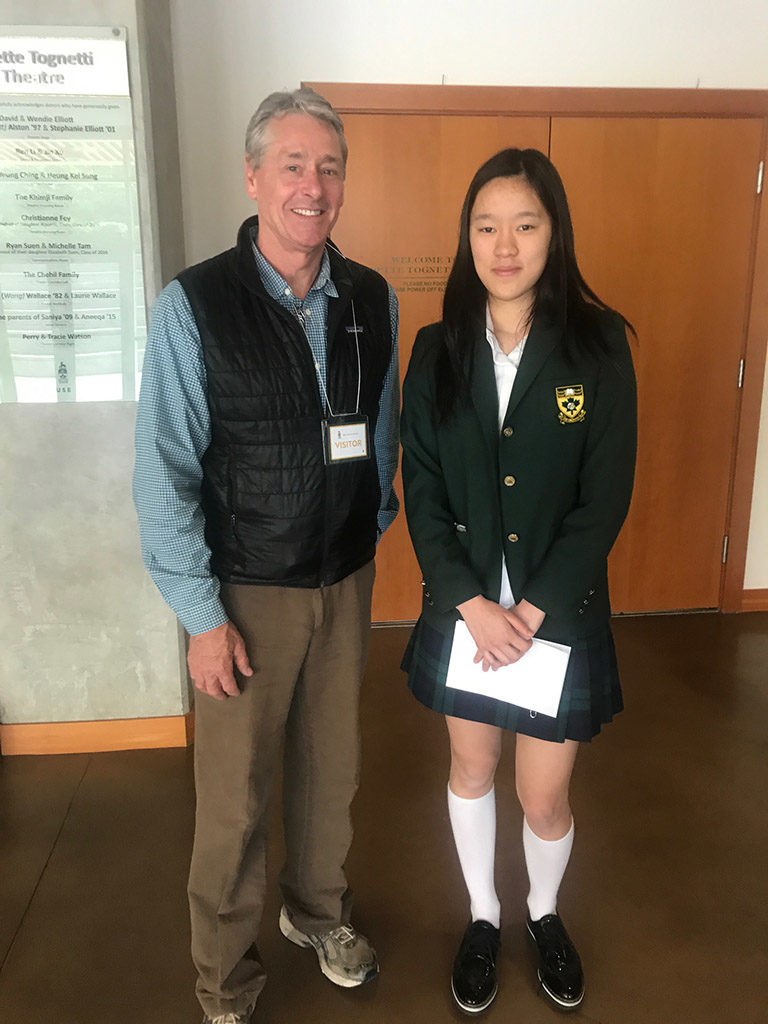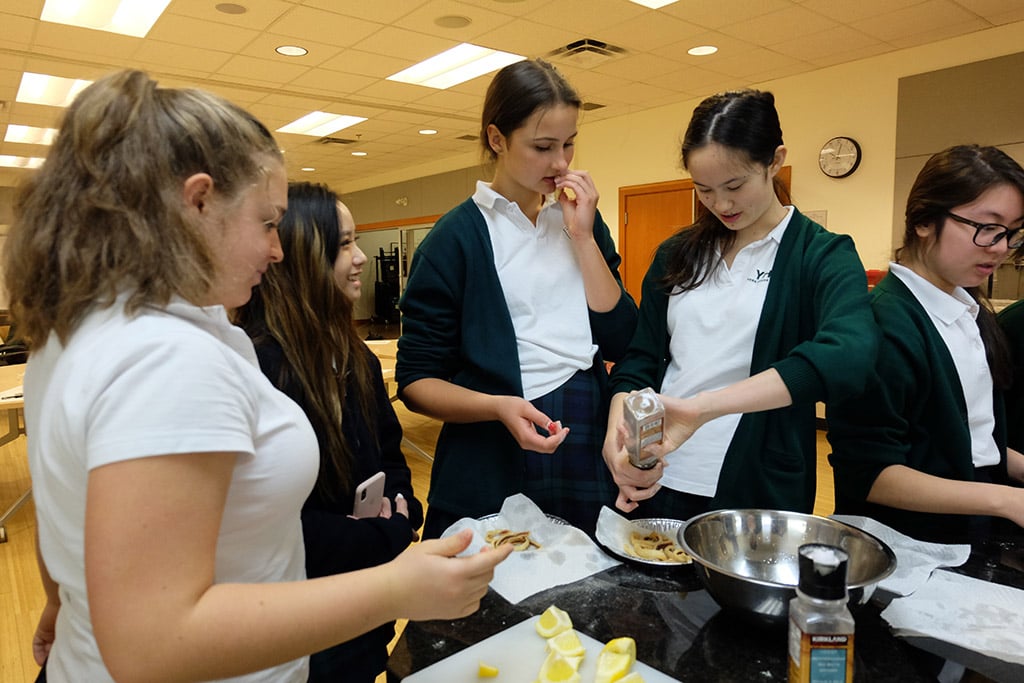Two Alices (both in Grade 11), Alice Z. and Alice L., became fast friends last year partly as a result of their common interest in conservation and sustainability. With the support of teacher sponsors Ms. Dombroski and Ms. Marcos, together they have helped to revive the Root & Shoots Club at YHS. Founded in 1977 by Dr. Jane Goodall as part of the Jane Goodall Institute to protect chimpanzees and their habitats, Roots & Shoots has since evolved to a worldwide movement that inspires a generation of young global citizens to be change agents for community centred conservation.
 They decided to start small at YHS this year. With only 10 students in the club in multiple grades, they partnered with Prince of Wales school to create mason bee houses with the apiculture club and build hummingbird feeders to hang around the school.
They decided to start small at YHS this year. With only 10 students in the club in multiple grades, they partnered with Prince of Wales school to create mason bee houses with the apiculture club and build hummingbird feeders to hang around the school.
This spring, underscoring her commitment to conservation efforts that impact us all, Alice Z. invited marine biologist and shark advocate David McGuire, the Director of Shark Stewards, to come and speak at assembly and share the importance of sharks to our ecosystem.
Alice Z. met David last year through a family friend in San Francisco who knew she was interested in ocean conservation. After she attended the Ocean Film Festival last March, David mentioned that he would be going to Borneo the following summer to study sharks. Recognizing Alice Z.’s keen interest in his work, Alice Z.’s mother thought that this would be a perfect opportunity for them to tag along. Needless to say, her experience working alongside David in Borneo was eye-opening and gave her a newfound appreciation for these misunderstood creatures.
Of course, Alice Z. admits that it is so much easier to raise awareness for elephants and koala bears. People are just less aware of how sharks are endangered and their importance to the health of the ocean. There is also the fear factor. Alice Z. pointed out that there are really only two to three species of sharks, out of thousands, that present any real threat to humans and that is mostly because they mistake humans in the water for something else, like a seal.
David was visiting Vancouver to raise more awareness of the importance of shark conservation as Vancouver remains one of the largest world markets for shark fin trading in the world for the making of the infamous shark fin soup.
Her friend’s experience and meeting David has also changed Alice L.’s mind about them. They are definitely not what they are portrayed as in the movies.
This summer, Alice Z. is going to San Francisco for one month to work with David as an intern, together with one of his PhD Students to tag six or seven-gill sharks and track their migration pattern. It is no surprise that the focus of her studies next year will be on biology.
They are both looking forward to next year and continuing to raise awareness for conservation for the health of our planet.























